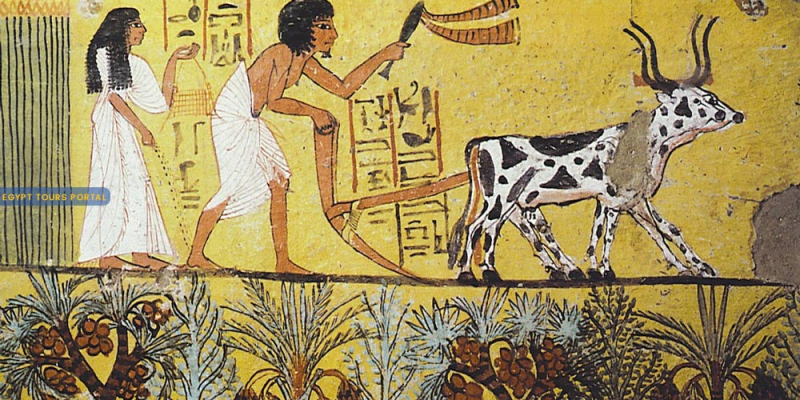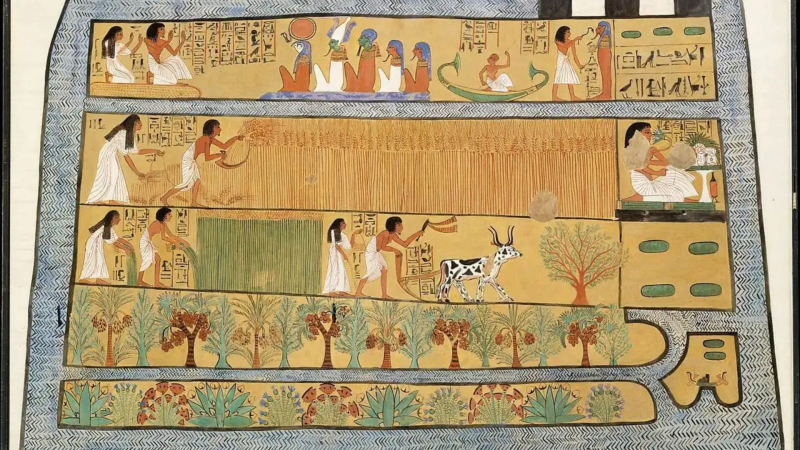The Plow
The Egyptians were the first to use boats for local and international trade and commerce. Egypt was a major commerce hub in the Mediterranean, exporting and importing items such as cattle, wine from Asia, precious stones from Persia, and copper from Senia. They were able to establish strong trading ties with Sudan, Phoenicia, Crate, and Persia. They were the first to construct their own navy by utilizing sophisticated knowledge of aerodynamics and shipbuilding skills. In 1160 B.C.E., they also developed the first known geologic and topographic map. They were the first to investigate and invest in the full potential of agriculture and farming as they studied the Nile's cycles, which led to the development of the earliest irrigation systems and the use of sickle blades and plows drawn by oxen to soften the parched soil.
Although historians are unsure of the exact origin of the plow, evidence suggests that the Egyptians and the Sumerians were among the first civilizations to adopt it circa 4000 B.C.E. Those plows were undoubtedly in need of refinement. The plows, which were probably made from adapted hand tools, were so light and inefficient that they came to be known as "scratch plows" due to their inability to penetrate the earth deeply. Additionally, the plows were powered solely by manual labor. For instance, wall murals depict four men working together to move a plow through a field - not the best way to spend the day in the intense Egyptian sun.
That all changed about 2000 B.C.E. when the Egyptians connected their plows to oxen for the first time. Early designs were attached to cattle horns, but they interfered with the animal's ability to breathe. Later versions added a strap system and were far more effective. The plow revolutionized agriculture in ancient Egypt, making farming easier for the Egyptians than maybe any other society at the time.
The plow undoubtedly made planting crops much simpler, but farming was still laborious labor. Farmers had to stoop over all day in the scorching sun while tilling the earth with short-handled hoes. In addition, the Egyptians harvested their crops with scythes and carried seeds in baskets. However, the pigs and sheep they employed to trample seed into the ground may have been the most inventive farming implements.

















